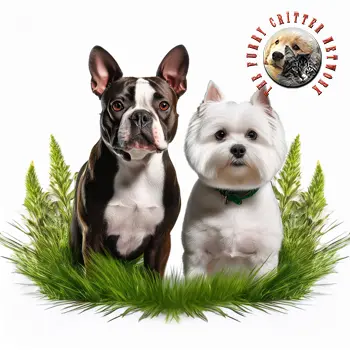Behavior
The American Kennel Club refers to the Bichon Frise as "merry" and "curious," and the breed standard calls for a dog that is "gentle mannered, sensitive, playful and affectionate." The dogs are generally very sociable and do well with an owner who takes them along on outings, and are affectionate and intelligent. If affiliated with a particular territory and encouraged by owners, they can become very territorial. Developed as a companion-dog breed, the Bichon Frise tends to get along well with both children and other animals. Bichon Frises are very obedient if training is started early and continued constantly.
Though not considered a retriever or a water dog by modern standards, the Bichon type, due to their ancestry as sailors' dogs, have an affinity for water and enjoy retrieving. On the boats, however, the animals' role was that of companion dog.
Bichon Frises have coats that require a diligent grooming schedule. Grooming helps remove loose hair, and the curl in the coat helps prevent dead hair and dander from escaping into the environment, as with the poodle's coat. The coat is combed to remove loose hair, mats, and tangles. Bichon Frises may need grooming approximately every four to eight weeks. This breed tends to have hair growing within the ear canals, that if not plucked regularly, can trap moisture, bacteria, and yeast, creating an unbalanced microbiome in the ear. This may lead to excessive head shaking, causing an ear hematoma. As Bichon Frises are white dogs, frequent bathing is required to maintain the color.
Bichon Frises are considered to be hypoallergenic as they do not readily shed (moult) and are thus generally suitable for people with allergies. It is important to note that human sensitivity to dog fur, dander, and saliva varies considerably. Although hair, dander, and saliva can be minimised, they are still present and can stick to "clothes and the carpets and furnishings in your home." Inhaling the allergens, or being licked by the dog, can trigger a reaction in a sensitive person.
Health
Bichon Frises are prone to scratching and chewing on themselves in the summer because of the warm and moist air, which commonly results in serious skin conditions. They are comparatively hypoallergenic, but they themselves suffer from allergies to fleas, ticks, chemicals, pollen, dust, etc. Loose knee joints, ear infections, cataracts, diabetes, and heart disease are also common.
Bichons are also prone to liver shunts. These often go undetected until later in life, leading to complications that cannot be addressed, and therefore liver failure. Bichons who are underweight, runts of the litter, or have negative reactions to foods high in protein are more likely to be suffering from a shunt. When detected early, shunt often can be corrected through surgery. However, the later in life the shunt is detected, the lower the likelihood of surgery being successful. Shunts can be kept under control through special low-protein diets and through medications to support liver function, help flush toxins that build up in the kidneys and liver, and control seizures that often occur as a symptom of the shunt. Without surgery, Bichons with shunts on average live to be 4–6 years old. Other symptoms include dark urine, lethargy, loss of appetite, and increased thirst. Seizures come in all forms; episodes of seizures can begin early in life but may go undetected. Early seizures can appear as a hypnotic state or an episode of vertigo.
Autoimmune hemolytic anemia (AIHA, also called immune-mediated hemolytic anemia, or IMHA) and immune-mediated thrombocytopenia (ITP) are responsible for many premature Bichon Frise deaths. These diseases can strike with little or no warning and kill very quickly. In AIHA, the dog's immune system attacks its own red blood cells, leading to severe, life-threatening anemia. Symptoms include weakness, loss of energy, lack of appetite, vomiting, diarrhea, rapid heart rate, rapid breathing, dark urine, and pale or yellow gums.
ITP often accompanies AIHA. In ITP, blood platelets (which cause blood clotting) are destroyed. The most common clinical signs are haemorrhages of the skin and mucus membranes. Mortality rates of 20% to 80% are reported.






